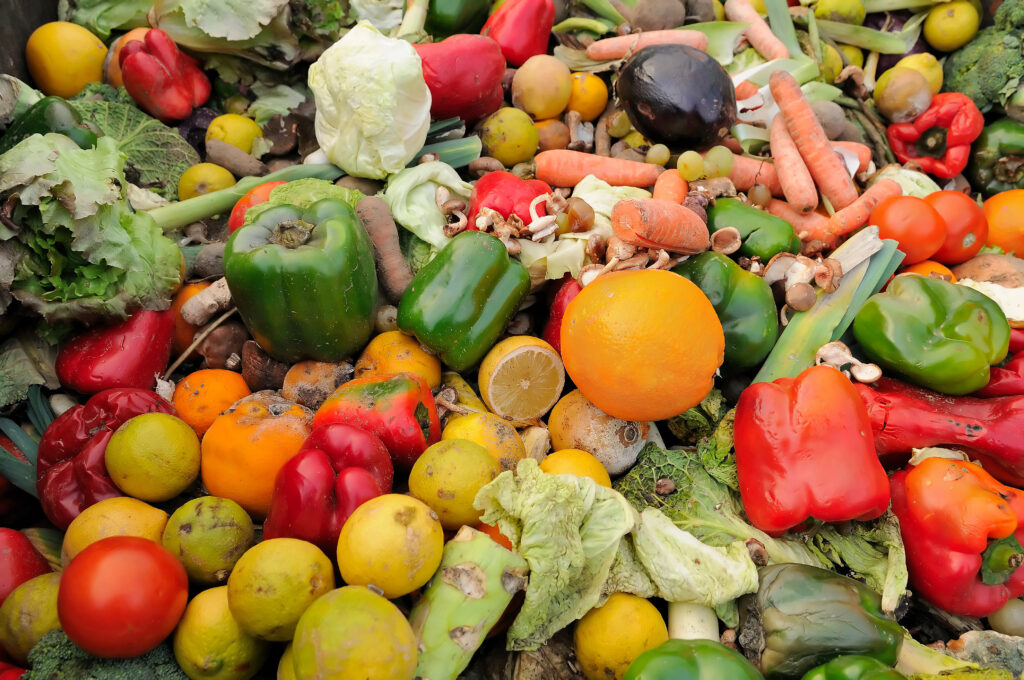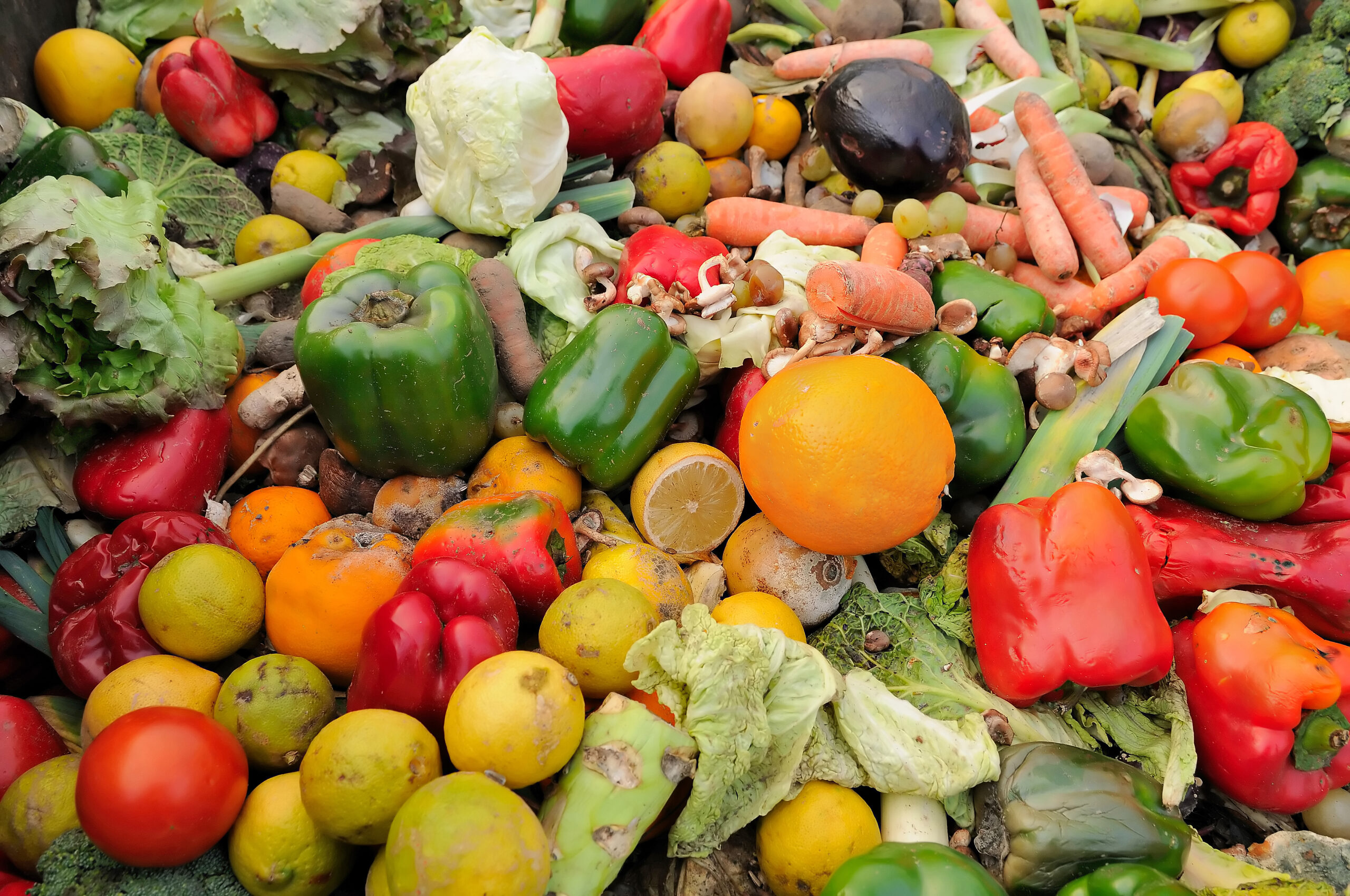If food waste were a country, estimates are that it would have the third highest greenhouse gas (GHG) emissions after China and the US. Sustainable Development Goal (SDG) Target 12.3 aims to halve per capita global food waste at the retail and consumer levels by 2030.
In the UK, 70% of UK food is estimated to be wasted by retailers and consumers combined: households throw away £14bn worth of food, leading to 25 million tonnes of GHG emissions from landfill, with 1.1 million tonnes discarded during food preparation, cooking and overlarge plate servings in the home. This equates to around £700 per year for the average UK family.

At the same time, the UK government reported an increase in food poverty to 6% in 2020/21, including 9% of children. This means that 4.2 million people in the UK suffer uncertainty about being able to access “an adequate quality of sufficient quantity of food in socially acceptable ways”.
In line with World Resources Institute recommendations, the climate NGO WRAP is working with businesses to roll out their Food Waste Reduction Roadmap and Toolkit.
The ‘Target Measure Act’ approach is already being adopted by UK businesses from farm to fork, enabling better understanding of how to develop actions to reduce citizen food waste. Food waste research, in the meantime, has focused on a range of barriers and opportunities, including information and awareness, food labelling, and consumer skills.
Environmental awareness
The University of Reading’s ‘Don’t be a food waster’ EIT Food-funded project used a food waste quiz to explore knowledge about food waste, its environmental impacts, and how to prevent food waste with 2,248 consumers in the UK, Germany and Belgium.
Knowledge around the environmental impact of food waste – water use, CO2 emissions, economic value and volume of waste – was poor, with less than 30% of questions answered correctly.
Our findings suggested that people hadn’t yet made the link between food waste and climate change. Meanwhile, other Reading research showed that people may have positive attitudes towards foods offering environmental benefits, such as upcycled ingredients normally discarded during manufacturing. Consumer understanding of this critical relationship therefore needs to be strengthened by campaigns like ‘Win. Don’t Bin’ that highlight the value of food and the impact on both people and planet if it is wasted.

Food labelling – ‘best before’ or ‘use by’?
‘Best before’ dates, an indicator of peak quality for things like texture, visual and olfactory quality, are sometimes used by consumers as a cue to discard food that is still edible. Cereals (including bread, pasta), vegetables and fruits are among the most wasted foods, and traditionally display ‘best before’ dates.
The ‘use by’ date, mainly applied to meat and dairy products, is an indicator of food safety, and foods stored beyond this date are not considered safe to eat. In the ‘Don’t Be a Food Waster’ research project, while 4 out of 5 consumers understood the meaning of ‘best before’, only half were familiar with the meaning of ‘use by’.
In WRAP’s research, milk one day past a ‘best before’ date would be discarded by one third of those asked, and by half of those asked if a ‘use by’ date was given. However, WRAP also found that food continues to be safe days, weeks or even months after its ‘best before’ date. As a result of WRAP’s campaigning, several large retailers in the UK have now committed to phasing out ‘best before’ dates.
Skills and food redistribution
‘Don’t Be a Food Waster’ consumers demonstrated better knowledge about how to combat food waste in the home, especially in relation to planning, storage, preparation, use, cooking, and disposal of food. However, only just over half these questions were answered correctly, suggesting the continued need for better education on such ‘action-based’ information.
Findings from this and other food waste research argues for policy-makers and NGOs to launch more consumer education campaigns using action-related information around planning, storage, re-use of leftovers, and recipe creation.
With the current economic crisis, there is a greater need for more innovative food redistribution and food sharing channels and opportunities. This includes food banks, where supply is being outstripped by demand, apps and databases for bargain, surplus or unwanted food, and services providing door-to-door delivery of pre-measured ingredients with recipes to help consumers reduce food waste and facilitate meal donation.
In terms of recognising the extent of the problem with food waste, linking food waste with environmental impact and climate change is an important step in getting consumers on board with food waste prevention. Initiatives involving food charities and businesses that support food waste prevention and food redistribution are another critical step in this transformational process.
Anna Macready is Associate Professor in Consumer Behaviour and Marketing in the Department of Agri-Food Economics and Marketing at the School of Agriculture, Policy and Development, University of Reading.

